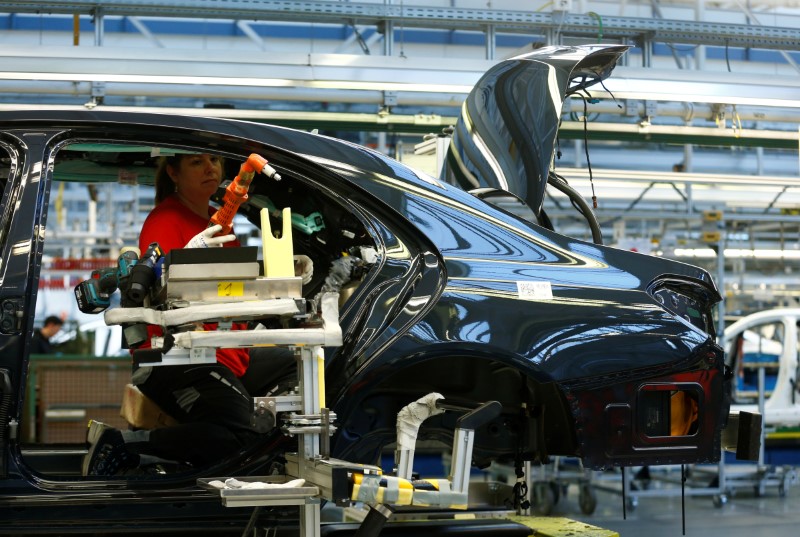
An employee of German car manufacturer Mercedes Benz works on the interior of a Mercedes S-Class (S-Klasse) at a production line at the Mercedes Benz factory in Sindelfingen, Germany, January 24, 2018. REUTERS/Ralph Orlowski
May 8, 2018
By Michael Nienaber
BERLIN (Reuters) – German industrial output rose more than expected in March, data showed on Tuesday, suggesting that factories in Europe’s largest economy ended the first quarter on a strong footing after two disappointing months.
Industrial output jumped by 1.0 percent, the strongest rise since November, after falling 1.7 percent in February and edging up 0.1 percent in January, data from the Economy Ministry showed. The March reading beat expectations in a Reuters poll for a 0.8 percent rise.
The stronger-than-expected rebound helped to dispel concerns that German growth could slow down massively in the first quarter after the economy grew by 2.2 percent in 2017.
A sector breakdown showed that manufacturing output rose by 1.1 percent as factories churned out more capital goods such as machinery and vehicles. Output in construction increased by 0.6 percent and energy production rose by 1.4 percent.
In the first quarter as a whole, industrial production edged up 0.1 percent on the quarter, the economy ministry said.
“After the strong performance in the course of 2017, production in manufacturing took a breather in the first quarter,” the ministry said.
The ministry blamed the weak start to the year on a flu epidemic, an unusually high number of strikes and an above-average number of holidays over Easter falling in March.
“After a calm phase, industrial output will gain momentum in the course of the year,” the ministry said, pointing to full order books and favorable economic conditions for trade.
Unicredit economist Andreas Rees said the data pointed to economic growth of up to 0.4 percent on the quarter in the first three months from 0.6 percent in the final quarter of 2017.
“Maybe this is just a blip in the first quarter, but this weaker performance could also continue in spring,” Rees added.
Data published by the Federal Statistics Office showed exports rose 1.7 percent in March while imports fell by 0.9 percent.
This widened the seasonally adjusted trade surplus to 22 billion euros from a revised 19.4 billion euros in the previous month, the data showed. Analysts had expected a surplus of 19.8 billion euros.
Data on Monday had shown that German industrial orders dropped for a third month running in March due to weak foreign demand, reflecting the headwinds factories are facing from rising protectionism and a stronger euro.
(Reporting by Michael Nienaber; editing by Madeline Chambers and Jason Neely)
